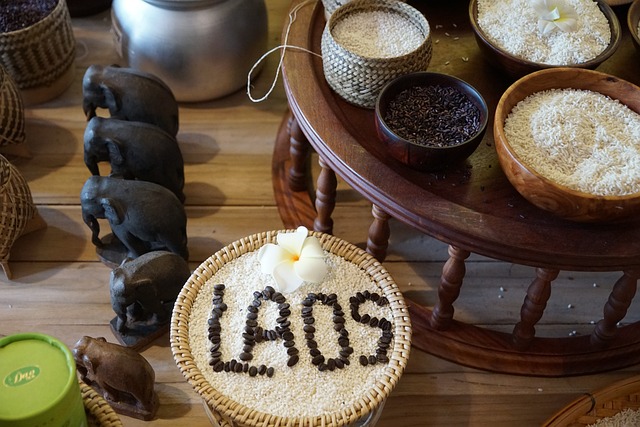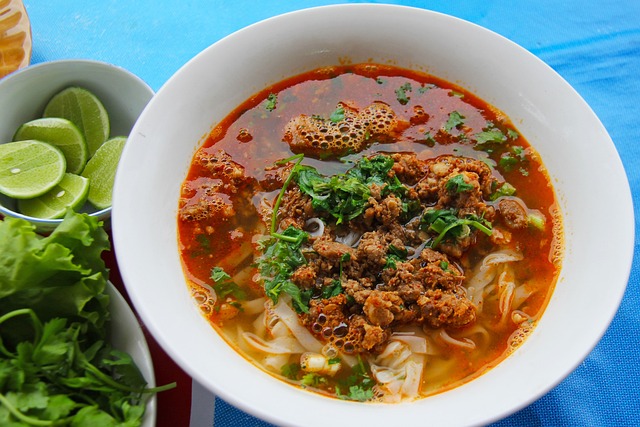Laos’ foods are deeply intertwined with its culture for several compelling reasons:
- Historical and Geographical Context: Laos’ cuisine reflects its rich history and diverse geography. The country’s location in Southeast Asia, bordered by Thailand, Vietnam, Cambodia, Myanmar, and China, has led to a fusion of culinary influences from neighboring countries. Moreover, Laos’ varied terrain, which includes lush jungles, fertile river valleys, and mountainous regions, provides a wealth of ingredients that shape its traditional dishes.
- Cultural Identity and Heritage: Laotian cuisine is an integral part of the country’s cultural identity and heritage. Traditional recipes, often passed down through generations, are cherished as symbols of family, community, and national pride. Meals in Laos are typically shared affairs, reinforcing social bonds and reinforcing cultural values of hospitality and generosity.
- Local Ingredients and Cooking Techniques: Laos’ foods are characterized by fresh, locally sourced ingredients and simple yet flavorful cooking techniques. Staples such as rice, freshwater fish, vegetables, herbs, and aromatic spices feature prominently in Laotian dishes. Cooking methods like grilling, steaming, and stir-frying are used to enhance the natural flavors of the ingredients while preserving their nutritional value.
- Religious and Ceremonial Significance: Food plays a central role in religious rituals and ceremonial occasions in Laos. Offerings of sticky rice, fruits, and other delicacies are made to Buddhist monks as part of almsgiving ceremonies, symbolizing generosity and spiritual merit. Special dishes are also prepared for festivals and celebrations, reflecting the cultural significance of these events and reinforcing communal ties.
- Environmental and Sustainable Practices: Laos’ food culture is closely tied to its natural environment and sustainable practices. Many traditional dishes are based on foraged or locally grown ingredients, reflecting a deep respect for the land and a commitment to preserving biodiversity. Traditional farming methods, such as terrace cultivation and agroforestry, are still practiced in many rural areas, further strengthening the connection between food, culture, and the environment.
Overall, Laos’ foods are a reflection of the country’s history, geography, and cultural values. By exploring the flavors, aromas, and stories behind Laotian cuisine, one can gain a deeper appreciation for the richness and diversity of Laos’ cultural heritage.
Delving into Laos’ vibrant food culture is an adventure for the senses, offering a glimpse into the heart and soul of this beautiful country. Here’s how you can savor the essence of Laotian cuisine:
- Try Sticky Rice (Khao Niew): A staple of Laotian cuisine, sticky rice is not just a side dish but a cultural icon. Enjoyed with almost every meal, sticky rice is traditionally eaten by hand, rolled into small balls, and dipped into accompanying dishes. It’s a simple yet integral part of the Laotian dining experience.
- Indulge in Laap (Larb): Laap is a quintessential Laotian dish made from minced meat (often chicken, pork, or fish) mixed with herbs, lime juice, fish sauce, and toasted rice powder. This flavorful and aromatic dish showcases the balance of savory, sour, spicy, and fresh flavors that are characteristic of Laos’ cuisine.
- Sample Mok Pa (Fish Steamed in Banana Leaves): Mok Pa is a traditional Lao dish in which fish is marinated in herbs and spices, wrapped in banana leaves, and steamed to perfection. The result is a tender and fragrant dish that highlights the natural flavors of the fish and the aromatic blend of herbs.
- Explore Street Food Markets: Wander through bustling street food markets in cities like Luang Prabang or Vientiane to discover a treasure trove of Laotian delights. From savory snacks like grilled meats on skewers (ping kai) to sweet treats like coconut pancakes (kanom kok), street food markets offer a feast for the senses and an opportunity to mingle with locals.
- Savor Tam Mak Houng (Green Papaya Salad): Tam Mak Houng is a refreshing salad made from shredded green papaya, tomatoes, lime juice, fish sauce, chilies, and garlic. It’s a popular dish in Laos, loved for its bold flavors and crunchy texture. Be sure to adjust the level of spiciness to your taste preference!
- Attend a Cooking Class: Immerse yourself in Laos’ food culture by joining a cooking class where you can learn to prepare traditional dishes from scratch. Local instructors will guide you through the process of selecting fresh ingredients, mastering cooking techniques, and understanding the cultural significance of each dish.
- Share Meals with Locals: One of the best ways to experience Laos’ food culture is by sharing meals with local families or joining communal dining events. Whether you’re invited to a traditional Lao feast (baci) or enjoying a home-cooked meal with new friends, sharing food is a time-honored tradition that fosters connections and creates lasting memories.
By embracing Laos’ food culture with an open heart and an adventurous palate, you’ll not only tantalize your taste buds but also gain a deeper appreciation for the rich tapestry of flavors, traditions, and stories that define this enchanting country. Bon appétit, or as they say in Laos, “kin khao laew!” (eat already!).

